The Best Kumano Kodo Accommodation Options (My Recommendations)
One of the highlights of my Kumano Kodo trip was the accommodation.
There aren’t any fancy hotels or resorts, but instead, there are cute traditional family-run guesthouses. They offer warm and authentic hospitality, and a chance to immerse yourself in the local lifestyle, and best of all INCREDIBLE FOOD.
But with options between Minshukas, Ryokans, Hotels and Hostels.. and different offerings between Kumano Travel and Booking.com… what is the best option, and which ones should you avoid?
In this post, I’ll share my recommendations for the best Kumano Kodo accommodation as you maneuver the track. I’ll share where I stayed on my Kumano Kodo trip in 2023 too. Plus, I’ll also share convenient tips on how to book them.
1️⃣Organic Hotel Kiri-no-Sato
[Jump To Review]
2️⃣Hotel Nagisaya
[Jump To Review]
3️⃣Minshuku Chikatsuyu
[Jump To Review]
4️⃣Guest House Hikari
[Jump To Review]
5️⃣ Adumaya Ryokan
[Jump To Review]
6️⃣ Minshuku Yunomineso
[Jump To Review]
7️⃣ Kawayu Midoriya
[Jump To Review]
8️⃣ Minshuku Momofuku
[Jump To Review]
9️⃣ Minshuku Koguchi Shizen-no-Ie
[Jump To Review]
🔟Minshuku Tsugizakura-oji
[Jump To Review]
1️⃣1️⃣ Minshuku Wakatake
[Jump To Review]
1️⃣2️⃣Onsen Minshuku Kosakaya
[Jump To Review]

Table of Contents
Kumano Kodo Trail Map
Celbrate your Kumano Kodo experience with this minimalist trail map of the Nakahechi Route (designed by me!) – showing all the key locations, start and end points, and trail stats at the bottom 🙂
You’ll Be Staying In Ryokans And Minshukus
Ryokans
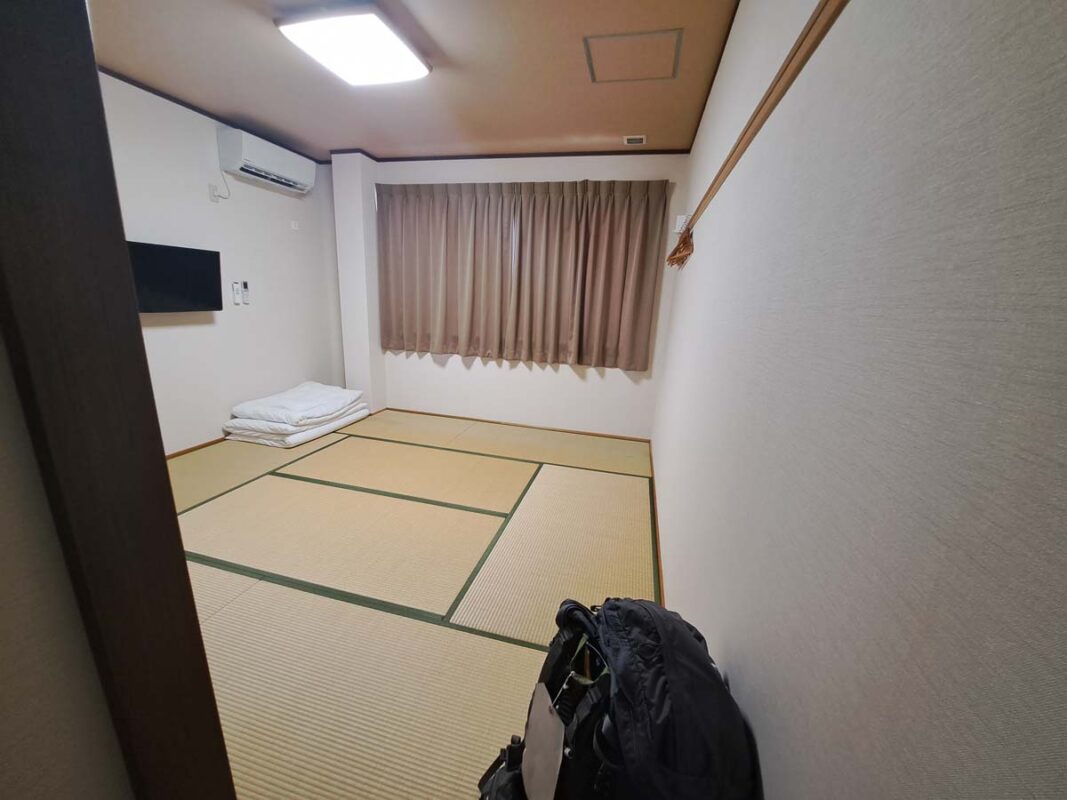
Ryokans are traditional Japanese inns. The rooms are spacious and comprise traditional Japanese furniture. Hosts also provide (often elaborate) multi-course dinners featuring local delicacies. These inns typically have communal baths (onsen) –either indoor or outdoor–filled with natural hot spring water. Some ryokans may have private baths or rotenburo (open-air baths) for each room.
Pros
Cons
Minshukus
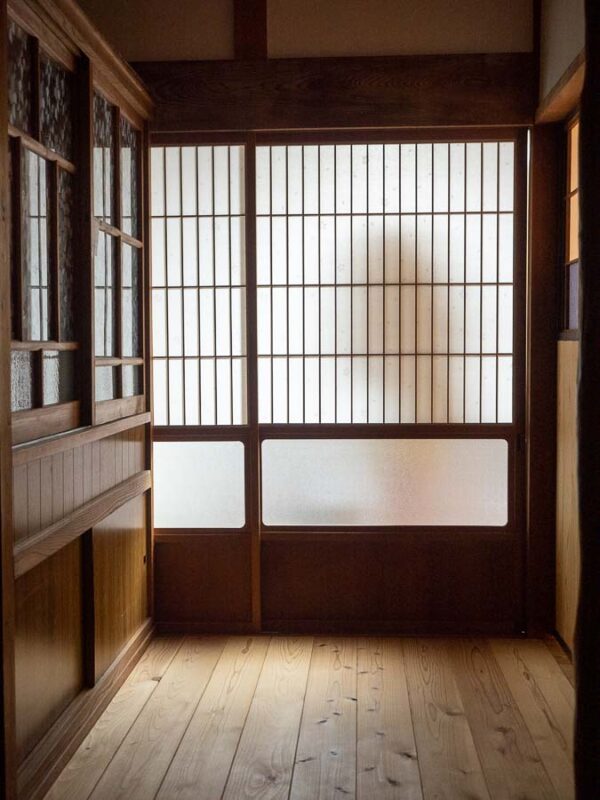
Minshukus are Japanese-style bed and breakfasts, which are far more affordable than ryokans. They have a homely feel, are family-operated, and are located on a farm or by the sea or river. Similar to ryokans, the rooms have a traditional Japanese finish.
Reccommendation: I stayed in both types of accommodation but probably preferred the Minshukas slightly more for the more intimate experience and chance to meet your homestay host!
Pros
Cons
The Best Way to Book Kumano Kodo Accommodation
You’ve got 2 main booking ‘pathways’. Kumano Travel for booking local ryokans and minshukas right on the trail (you finish your days walking and arrive at the door of your stay). Or, booking.com for booking more western-style accommodation like hotels which are typically off trail (you’ll need to catch a bus to and from before and after your day’s hiking).
There’s a bit to this, so I wrote a full guide to booking Kumano Kodo accomodation here.
Kumano Travel (for on trail accommodation)
Kumano Travel is the official reservation system of the Kumano Kodo. It’s operated by the local tourism association and they provide comprehensive and reliable service. Because it’s community-based, you’ll find personalized accommodation options, model itineraries, local package tours, and any other services to make your trip run smoothly.
A few perks of using the agency include:
- Luggage delivery
- Bus tickets
- Guided tours
- Shipping service for trip purchases
- Access to accurate information about the availability and prices
Be warned however: Booking through the Kumano Travel system can be a bit of a nightmare (we waited for over 4 weeks with no response) so checkout my tips here on making your booking.
Booking.com (For off-trail accommodation)
This is my go-to hotel booking agency because they tend to offer slightly better pricing and seem to be the most popular platform in Japan.
(I could be wrong but there were a lot more options on here compared to Agoda and Expedia)
It’s user-friendly and secure, with an extensive selection of accommodation options. An amazing perk is that you can peruse the reviews and ratings before booking a lodging of your liking.
Making use of this service means:
- You can compare and contrast different options
- Access to discounts and deals, including free cancellation and modification policies
- Reviews to make an informed decision
- Direct communication with the hosts to help confirm or clarify any details
Day 1: Takahara
Takahara is a small village on a hilltop, surrounded by green fields and forests. It is also known as the “Village in the Mist” because it often gets covered by a mystical fog in the morning and evening.
Best Place to Stay: Organic Hotel Kiri-no-Sato
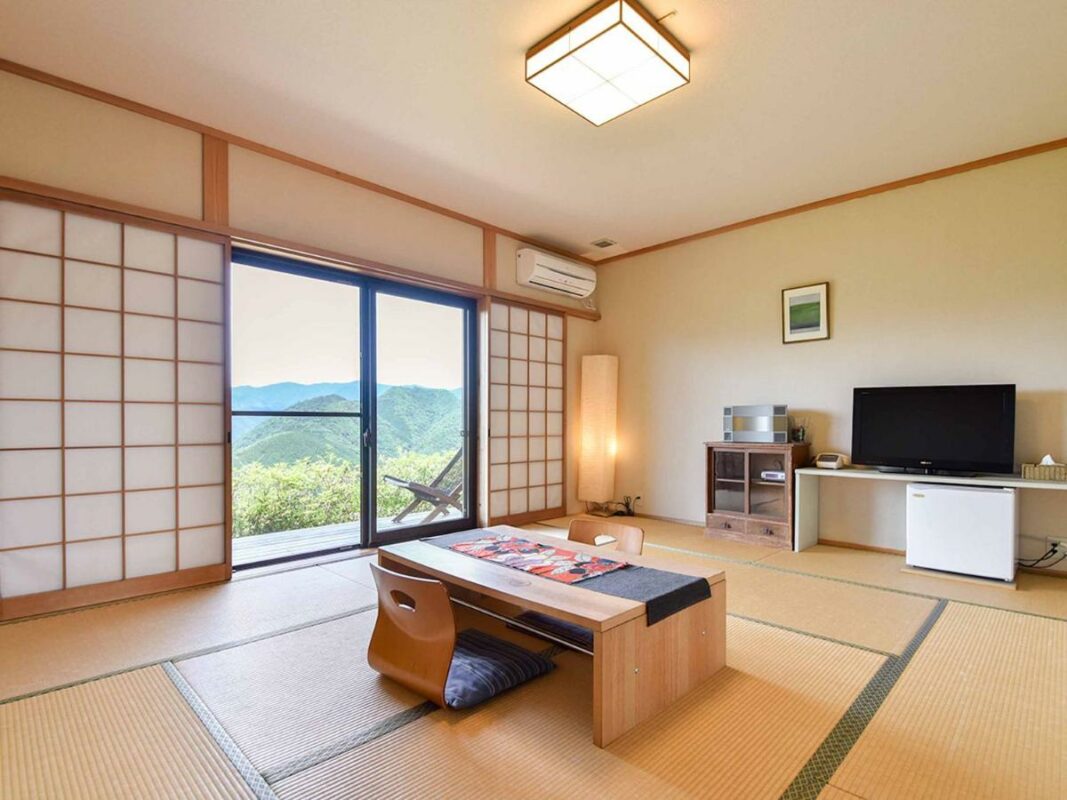
Organic Hotel Kiri-no-Sato is a comfortable ryokan with an eco-friendly theme. It has spacious and well-kept rooms with private balconies. The highlight of the stay is the food. It’s freshly prepared using organic, local ingredients. And it’s always delicious. The hosts are friendly and attentive and are proficient in English, Spanish, and Chinese.
Amenities
- Free Parking
- Free Wi-Fi
- Hot tub
- Free shuttle
- Restaurant
- Water activities
- Hot spring bath
- BBQ facilities
- Electric vehicle charging station
- Breakfast
- Vending machine
- Baggage storage
- Concierge
Runner Up: Hotel Nagisaya
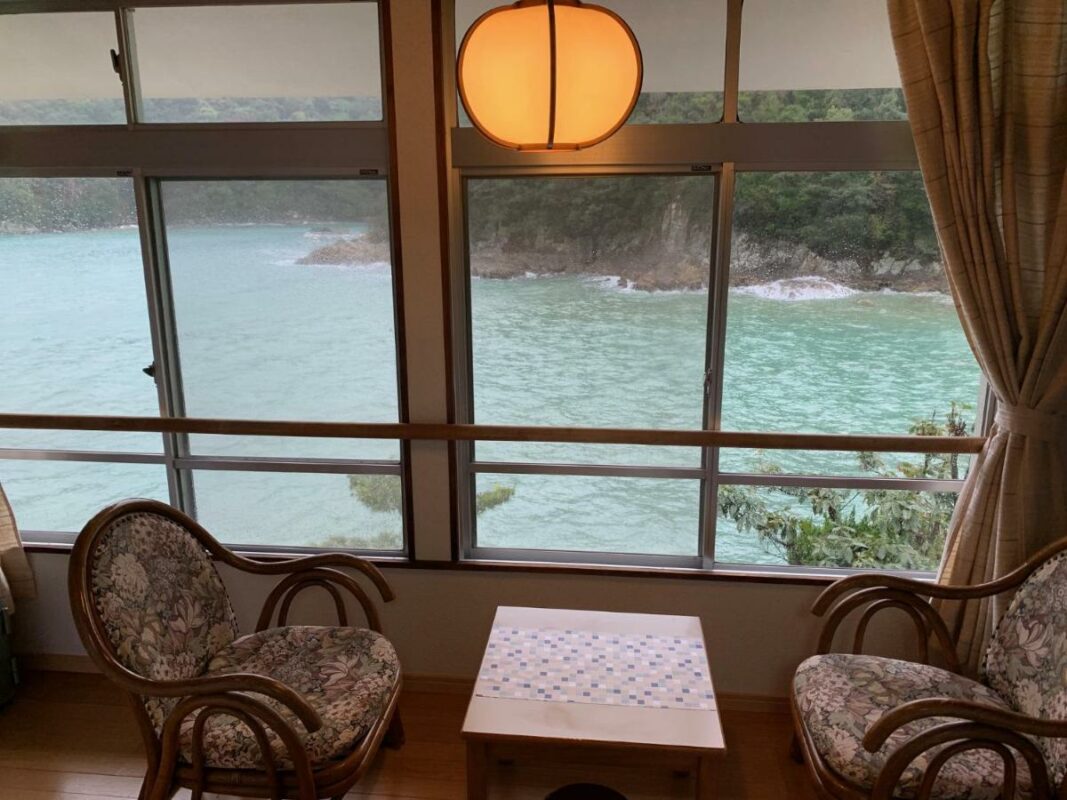
This is another decent ryokan with a great experience. It has cozy bedding, and the rooms are decently sized. Although the bathroom is a bit old-fashioned. The staff are very welcoming, and they prepared amazing food. I especially enjoyed the hot spring baths with an ocean view.
Amenities
- Free shuttle service
- Hot spring baths
- Karaoke
- Gift shop
- Fishing
- Massages
Day 2: Chikatsuyu
This village is nestled in a valley, along a river, and it has more shops, restaurants, and facilities. It is also a convenient place to access other attractions.
Best Place to Stay: Minshuku Chikatsuyu
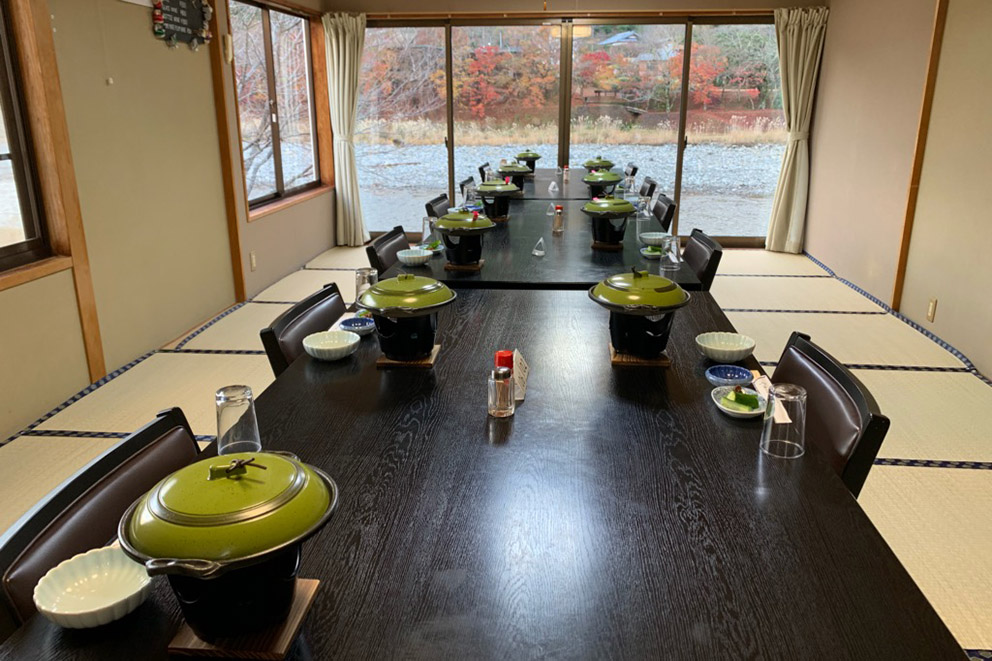
This charming guest house boasts warm and welcoming hosts. It consists of clean and homely rooms with private bathrooms. The food is delicious and varied, featuring local and seasonal dishes.
Amenities
- Free Parking
- Free Wi-Fi
- Hot tub
- Restaurant
- Children’s Activities
- Laundry service
Runner Up: Guest House Hikari

Guest House Hikari is a stylish hostel with a friendly stay. The hosts were hospitable and helpful and went above and beyond to make my entire experience pleasant. Although the rooms are small, you can expect a comfortable stay. There’s also a common area where I had the most fun socializing with other guests.
Amenities
- Free Wi-Fi
- Daily housekeeping
- Luggage storage
- Garden
- Air conditioning
Day 3: Yunomine Onsen or Hongu
Yunomine Onsen is a small and quaint village famous for its hot springs. It’s also home to the Tsuboyu, the only UNESCO World Heritage hot spring you can bathe in.
Hongu is a larger and more lively town that is the center of the Kumano faith. It’s home to the Kumano Hongu Taisha–largest shrine of the Kumano Kodo–and Oyunohara–the largest torii gate in the world. You can choose to stay in either place or split your stay between them.
Yunomine Onsen
Best Place to Stay: Adumaya Ryokan
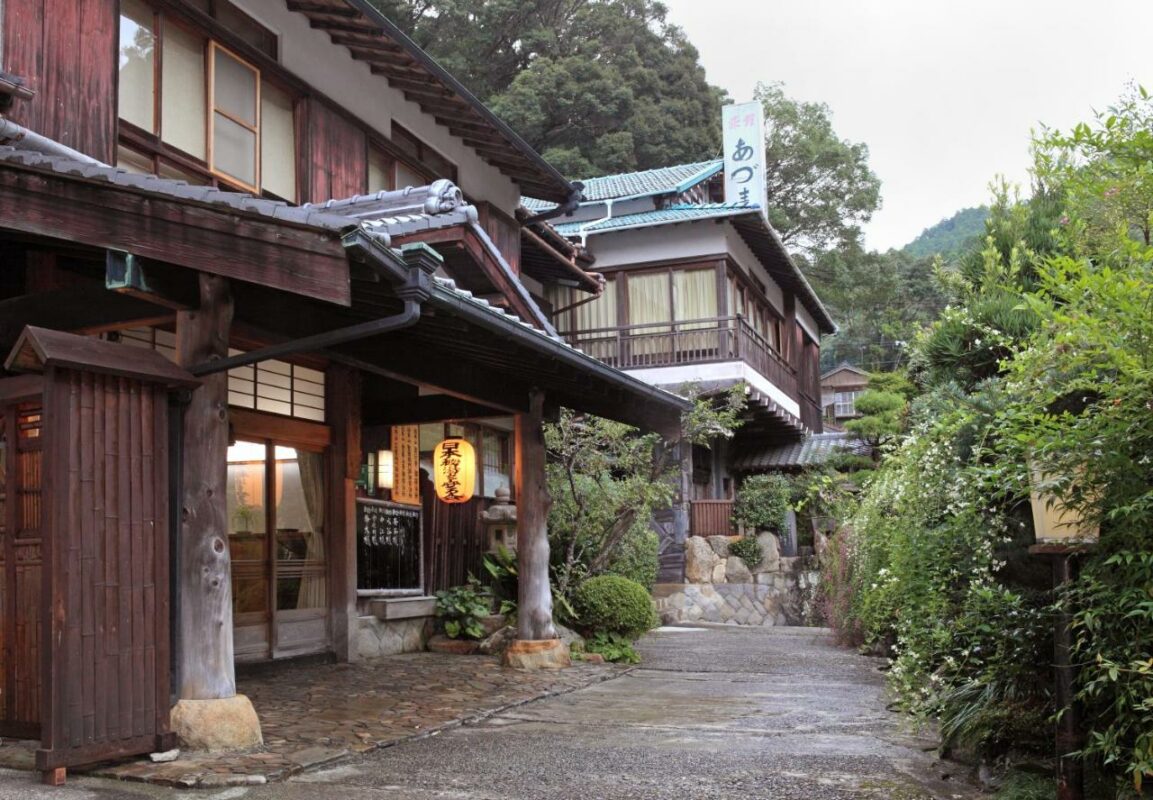
For a luxurious stay, you can’t go wrong with Adumaya Ryokan. It has spacious and beautiful rooms and several natural hot spring baths, both indoor and outdoor. The food is exquisite and refined, made from both local and seasonal ingredients.
Amenities
- Free Parking
- Free Wi-Fi
- Sauna
- Karaoke
- Children’s Activities
- Meeting rooms
- Hot spring bath
- Spa
- Open-air bath
Runner Up: Minshuku Yunomineso
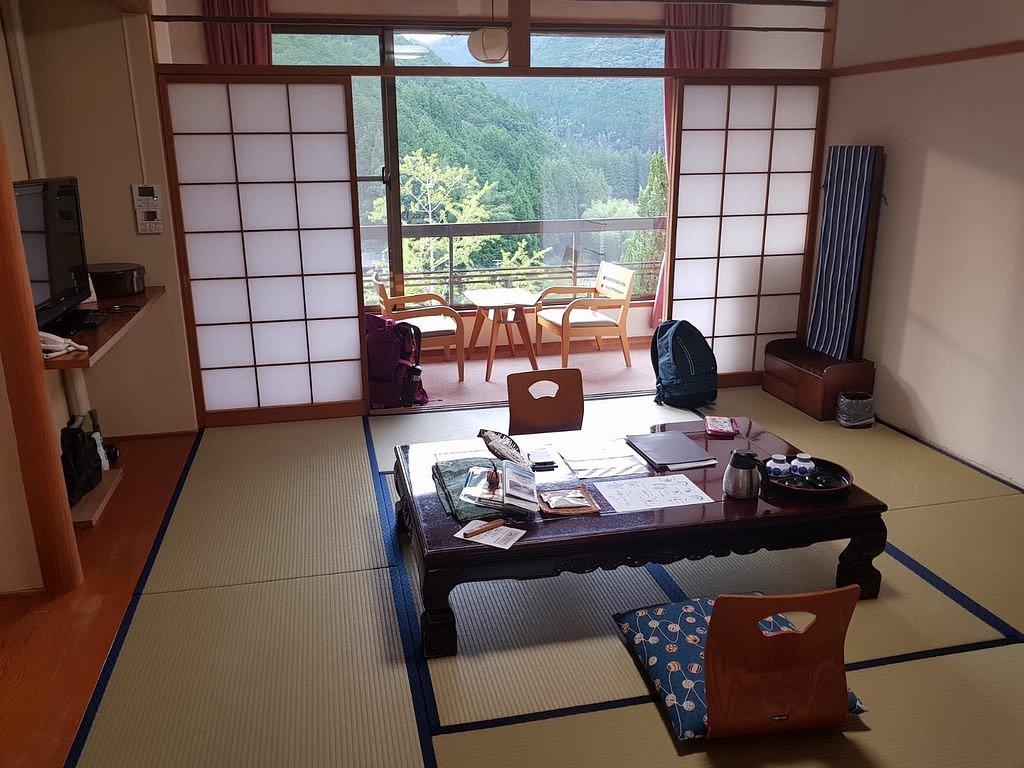
This is a family-friendly guest house with clean and comfortable rooms. You can easily access most attractions on foot. The staff are hospitable and can speak some English.
Amenities
- Free Parking
- Free Wi-Fi
- Hot tub
- Bar / Restaurant
- Karaoke
- Children’s Activities
- Pet Friendly
- Free shuttle or taxi services
- Massage
- Open-air bath
- Laundry service
Hongu
Best Place to Stay: Kawayu Midoriya

Another modern lodging, this ryokan features spacious and clean family rooms. It also has several natural hot spring baths, both indoor and outdoor. And the friendly hosts serve tasty and diverse food.
Amenities
- Free Parking
- Free internet
- Restaurant
- Bicycle rental
- Free shuttle or taxi services
- Hot spring bath
- Baggage storage
- Massage
- Laundry service
Runner Up: Minshuku Momofuku
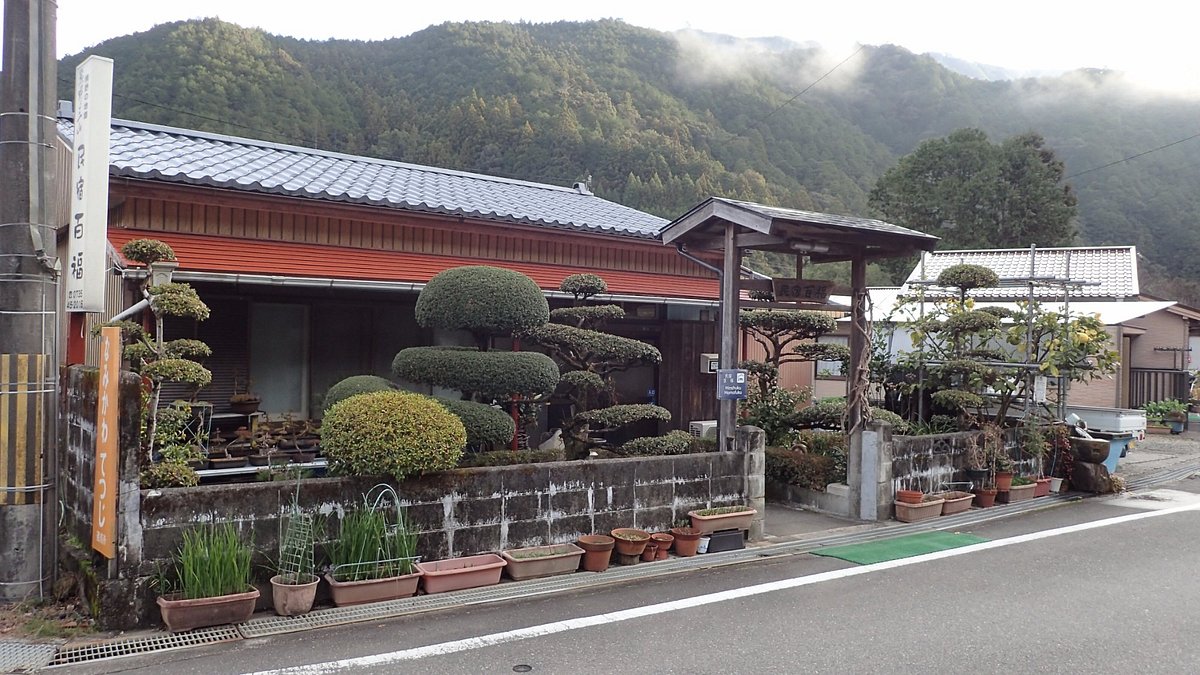
Minshuku Momofuku is a simple guest house featuring only 3 rooms. It offers a comfortable stay, and the hosts, a retired couple, are extremely warm and friendly. The meals are prepared from produce foraged in the mountains and nearby rivers and served in generous portions.
Amenities
- Free Wi-Fi
- Hot bath
- Children’s Activities
- Laundry service
Day 4: Koguchi
Koguchi is a peaceful and scenic place and is the starting point of the Ogumotori-goe trail.
Best Place to Stay: Minshuku Koguchi Shizen-no-Ie

Minshuku Koguchi Shizen-no-Ie is a renovated schoolhouse nestled in the mountains, which is ideal if you’re seeking absolute peace. It’s charming and cozy with welcoming staff. The rooms are clean and you can immerse yourself in the natural hot spring bath any time of day.
Amenities
- Free Parking
- Laundry facilities
- Free Wi-Fi
- Luggage storage
Runner Up: Minshuku Tsugizakura-oji
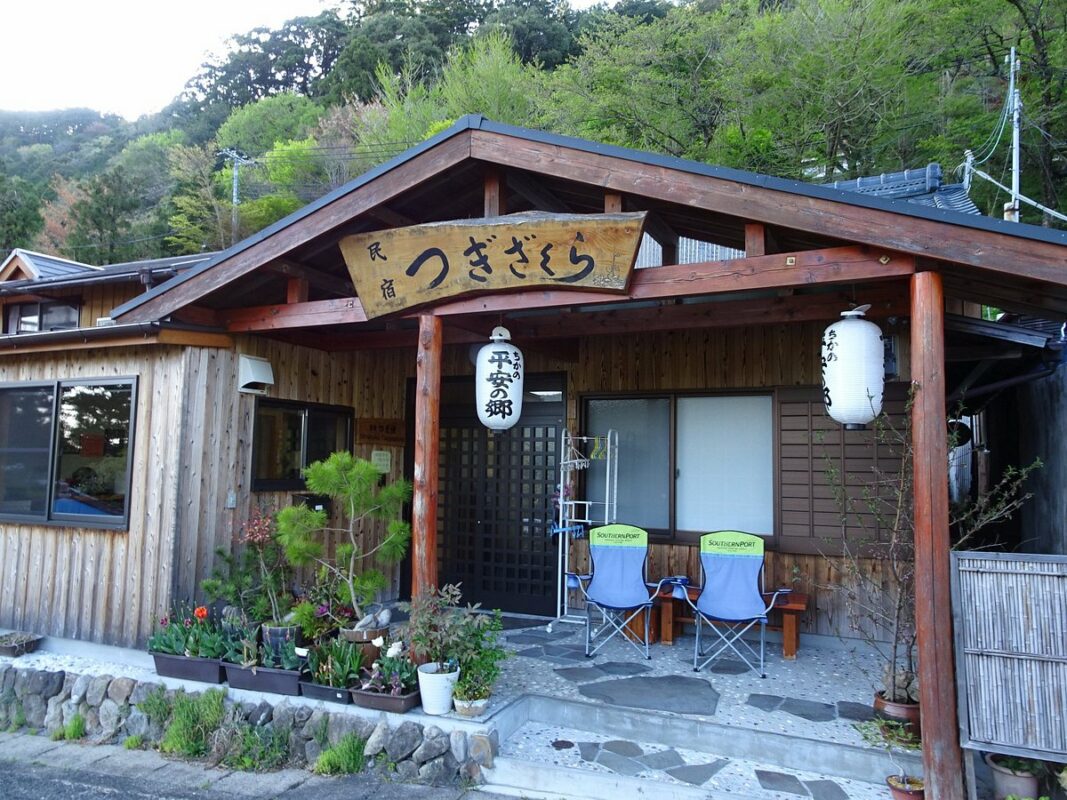
This beautiful guesthouse is conveniently located along the trail, close to the Tsugizakura-oji shrine and the Nachi Taisha Grand Shrine. It offers an enjoyable stay, with delicious meals, a private bath, and a friendly host family.
Amenities
- Free Parking
- Free Wi-Fi
- Hot bath
- Restaurant
- Laundry service
Day 5: Kii Katsura
Kii Katsura is a convenient place to end your hike. It’s closer to the train station, bus terminal, and airport. It’s also ideal for water activities, if you wish to end on that note.
Best Place to Stay: Minshuku Wakatake

Minshuku Wakatake is a charming hot spring inn with friendly and welcoming hosts. It has spacious and cozy rooms with lovely balconies.
The food is a definite highlight, with various dishes served in generous portions.
Amenities
- Onsen
- Free Parking
- Free Wi-Fi
- Luggage Storage
Runner Up: Onsen Minshuku Kosakaya
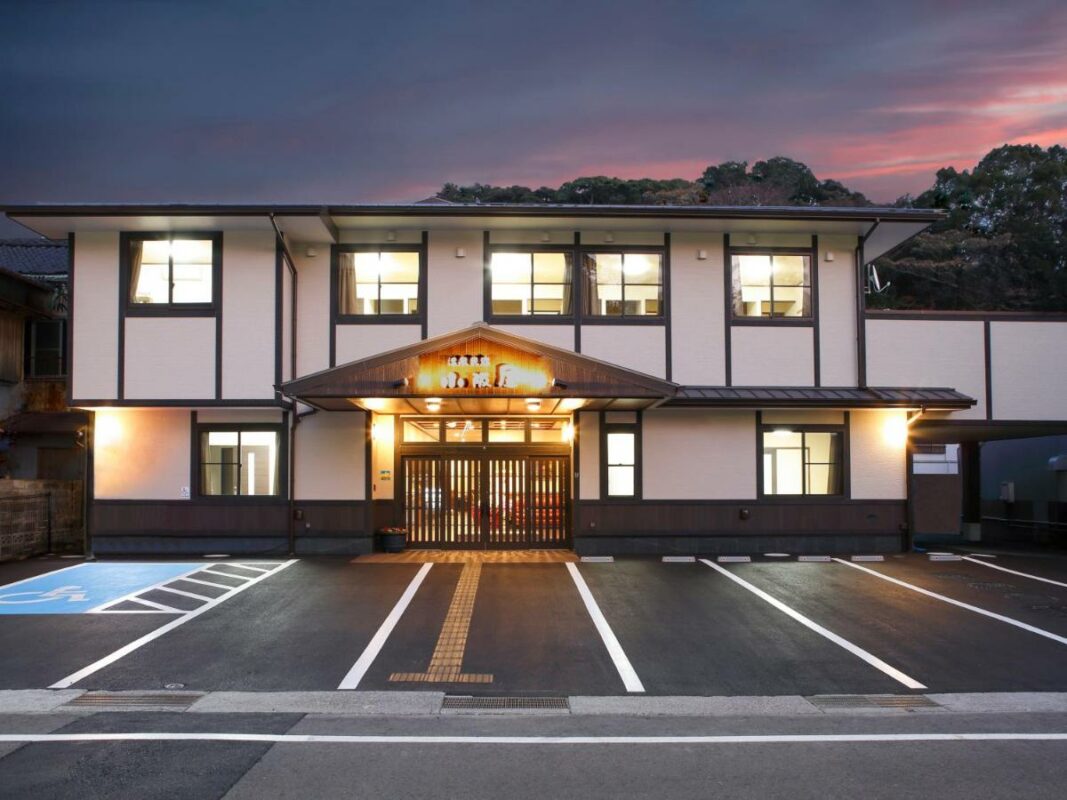
Onsen Minshuku Kosakaya is a family-run inn located in Katsuura Onsen and offers a mix of traditional Japanese hospitality and modern amenities. The rooms are spacious and cozy.
You’ll be welcomed by friendly and helpful hosts, and although there’s a blend of Western culture, they mainly serve Japanese-style dishes.
Amenities
- Hot spring bath
- Massage services
- 24-hour front desk
- Free Wi-Fi
What To Expect At Your Guest House
Luggage Delivery and Storage Service
If you don’t want to carry your luggage while hiking, you can use the luggage delivery and storage service offered by Kumano Travel. You can drop it off at your accommodation in the morning, and the staff will deliver it to your next stay. The service costs around 1,000 yen per bag per day, and you need to book it in advance.
Learn more about the different luggage transfer options in this article
Serving Meals
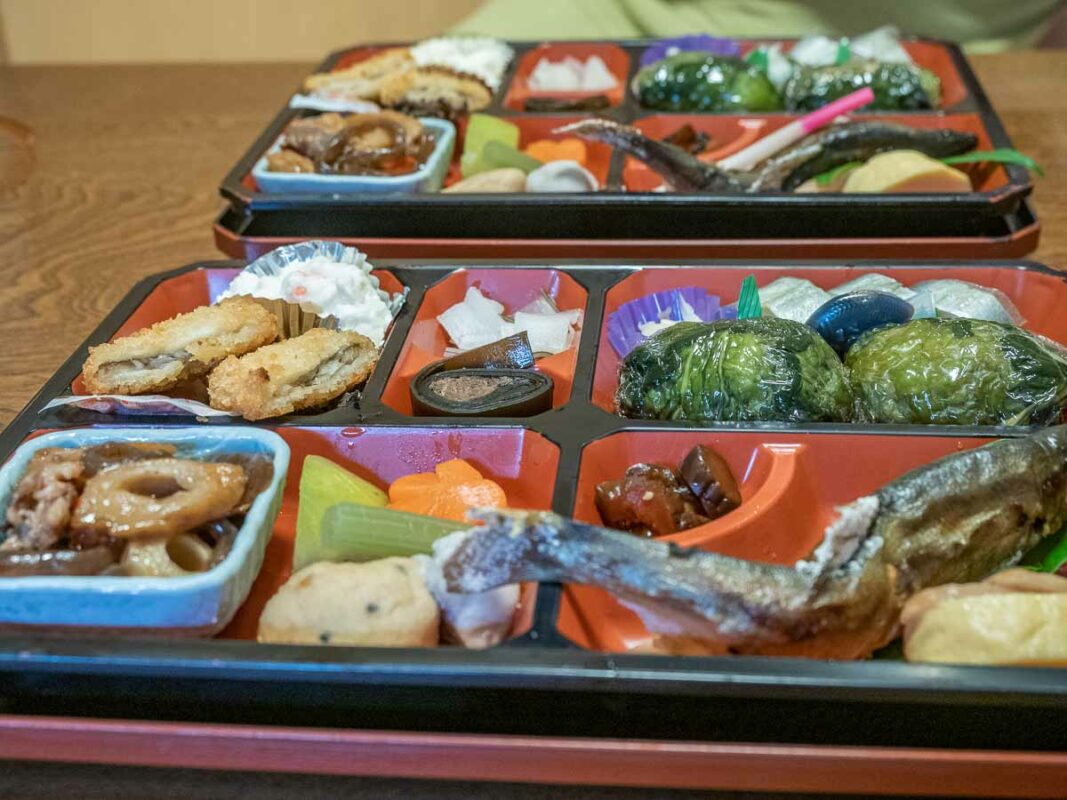
Most of the accommodations include dinner and breakfast in their price, and they usually serve them at a fixed time. You may need to inform them of your arrival time, your dietary preferences, and any allergies in advance.
Packed Lunch
Staying in a lodging with a packed lunch option takes the mental load off of having to decide what to bring for your trek ahead. The only thing you have to do is stipulate your dietary preferences.
The meal usually consists of rice balls, pickles, and snacks. I recommend you bring your own water bottle because there aren’t many places to buy drinks along the way.
Onsen
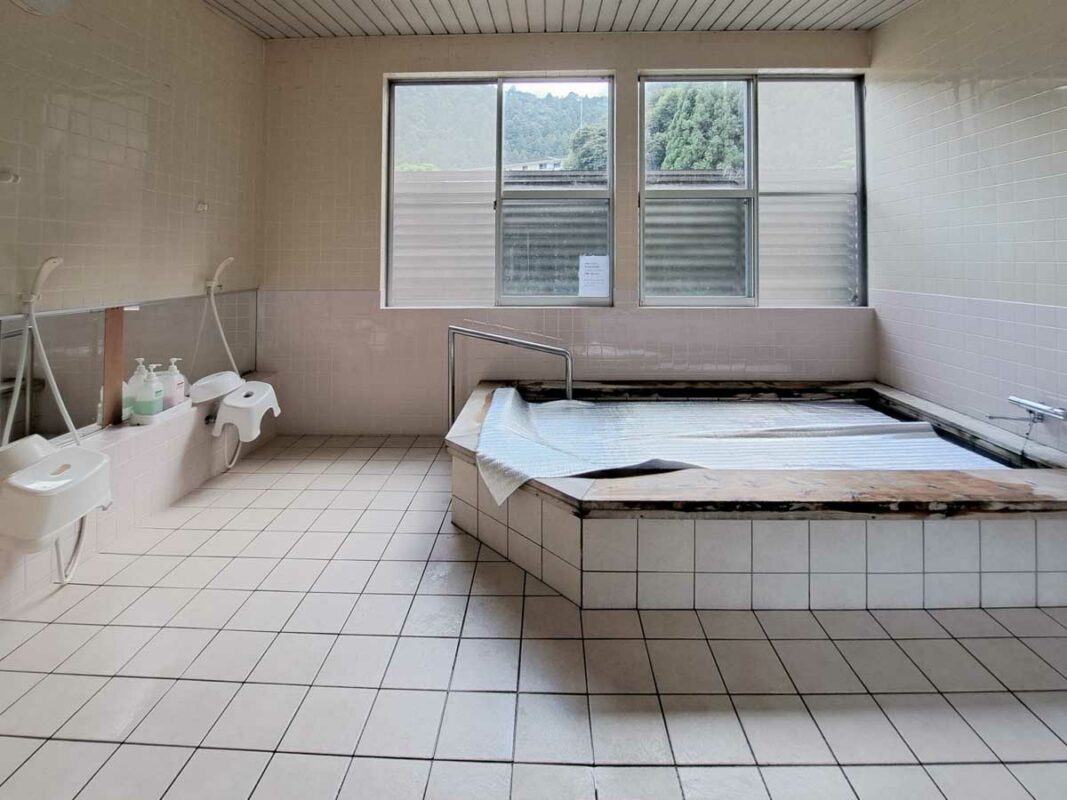
One satisfying aspect of overnighting in Japan is that you’ll have access to natural hot spring baths. I found them to be a great way to relax and soothe my muscles after a long day of hiking. There are some rules and etiquette to follow when using the onsen.
Some of these entail:
- Washing yourself thoroughly before entering the bath
- Be completely naked
- Not entering the tub when drunk
Tips for Booking Hotels on the Kumano Kodo
1. Plan ahead
The Kumano Kodo is a popular destination, so the accommodation fills up quickly. Book them a few months in advance. If you’re booking through Kumano Travel, check the availability calendar, which shows the occupancy rate of each vacancy on each date.
2. Be flexible
Because the area is rural and remote, options aren’t varied. You may find yourself having to compromise on some aspects–price, location, facilities–or adjusting your itinerary or route.
Kumano Kodo Travel Planning Cheatsheet
🚑 Should I buy travel insurance for Japan?
100% YES! — Japan has “free” healthcare but it’s only for citizens! Tourists need travel insurance in case anything happens on your visit. Also be aware many policies won’t cover hiking as it’s a high risk activity! (that’s right, check the t&c’s on your complimentary credit card insurance)
I highly recommend World Nomads as you can get specific add-ons for the crazy activities you’re doing – and starts at just $7 a day!
🏩 What’s the best way to book my Kumano Kodo accommodation?
Your only realy two options here are Kumano Travel and Booking.com. Its a complicated process so I wrote this guide here on the best kumano kodo accomodation options
If you don’t want to figure it all out (it’s meant to be a holiday after all) you can book a package tour. Here are my recommendations for both guided and self-guided.
💸How do you pay for things in Japan?
Japan may have flying robots.. but they also still use cash! So you’ll want to get some folding tender out from an ATM when you land. EFTPOS / Debit / Credit Card and Paywave (contactless payments) is common at bigger businesses but small bars, and street vendors want cash.
I personally use a Wise debit card for all my international money needs as they only convert the funds when you make payment, plus they offer a much better spread (margin on the true exhange rate) than the banks do. They work in all Japanese ATMs I tried.
🚙 Do you need to rent a car in Japan?
I wouldn’t reccommend it — Transport in Japan is expensive whatever mode you chose, but fortunalty the publc transport system is out of this world in terms of both freqency and coverage. If you are heading to a lot of off the beaten track places, then you may want a rental. I use Discover Cars to find the cheapest rates on rentals cars and remember you can save money if you avoid picking up at the airport.
🚆 What about the JR Rail Pass?
We didn’t – but it depends on the length and itenirary of your trip. The JR Pass is expensive (and just went up in price again!) and if you’re walking the Kumano Kodo you wont need it for probably 6 days straight anyway.
Do the math, but in most cases buying the train fares you need, when you need it will work out more afforably overall – and give you more flexibility (as the JR Pass doesn’t cover all lines)
📲 How do I get internet/data/wifi in Japan and on the trail?
This one needs a whole nother article, but the short version is;
- local SIM cards are cheaper but generally require a fixed term contract (not practical for people visiting)
- Tourist ‘short stay’ SIMs are a bit more expensive but will give you plenty of data while your visiting and are best for solo travelllers.
- If you’re travelling as 2 or more people, renting a pocket WIFI unit from the airport is the most economical option – Works out cheaper than getting two tourists sims
- Use a travel eSIM like Saily or Airalo. This works from the moment you land is is SOOOOO much easier than trying to pick a data pack in japanese. It also gives you connectivity across neighbouring asian countries if you buy a regional sim! TIP: I used to use Airalo but now find Saily a much better product – you can get 5% off with code SPECIAL5
✈️ What’s the best site to buy flights to Japan?
For finding cheap flights, I recommend Skyscanner. Once you find the flight you’re looking for, I’d then suggest booking directly with the carrier (even if it costs a few $$ more than with one of the agreggators/agencies).
💧Can you drink the water on the Kumano Kodo?
Yes — Japan is very clean. In all townships you’ll pass through and stay along the Kumano Kodo the tap water is drinkable. If you want to drink water from the rivers and streams you generally can but should do so at your own risk. ALWAYS follow best practice and drink from fast flowing water as far up stream as possible. I drank the water and was fine.. but i’d generally recommend a Brita Water Bottle for rehydrating on the trail safely.
🎫 Do I need a visa for Japan?
Likely Not — Japan now recognises 70 countries as ‘visa exempt’ for short term stay. So if you’re a US, UK, NZ, AU and EU passport holder you don’t need a Japansese visas. However, some other countries do (check here!). And if you plan to stay for more than 90 days (an average tourist visa length), you will need to look into the Japanese working holiday visa scheme, or the new Digital Nomad visa scheme.

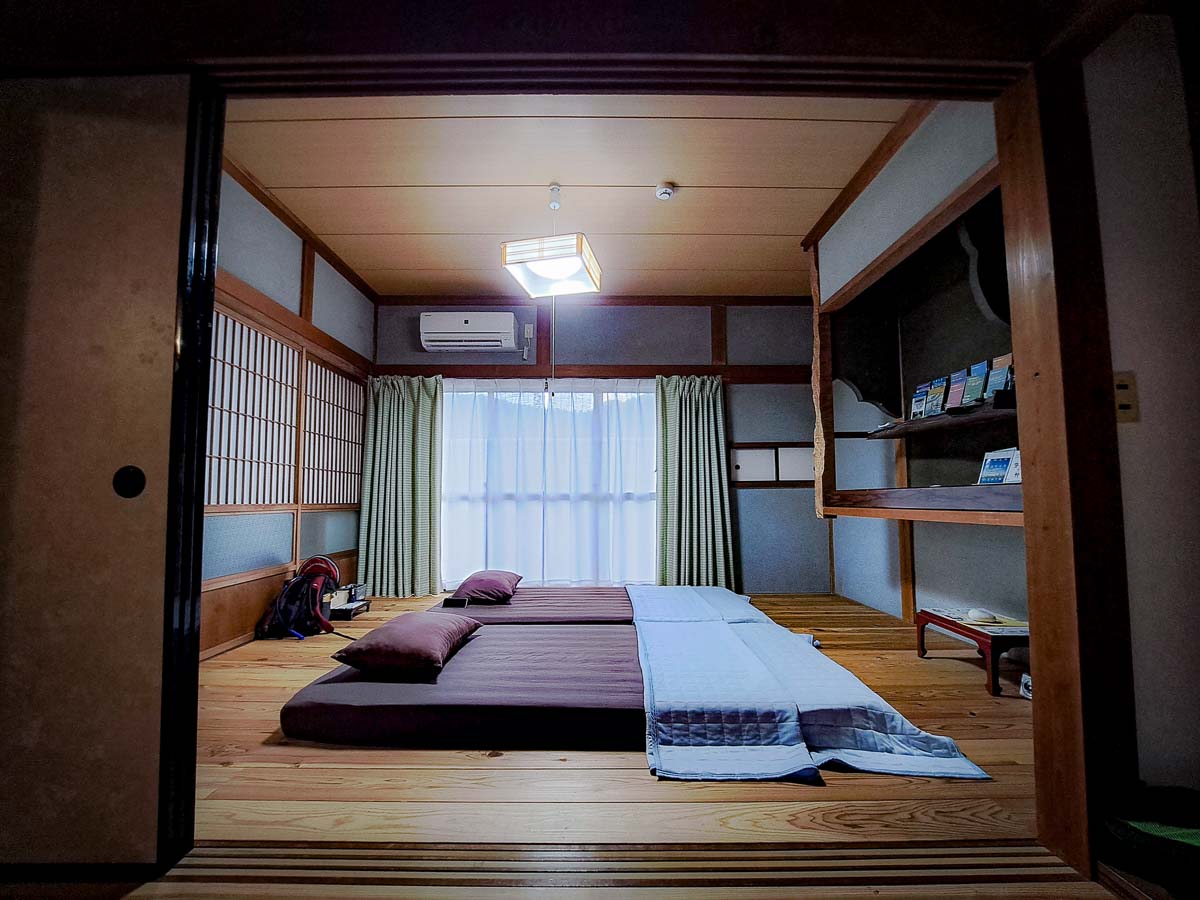
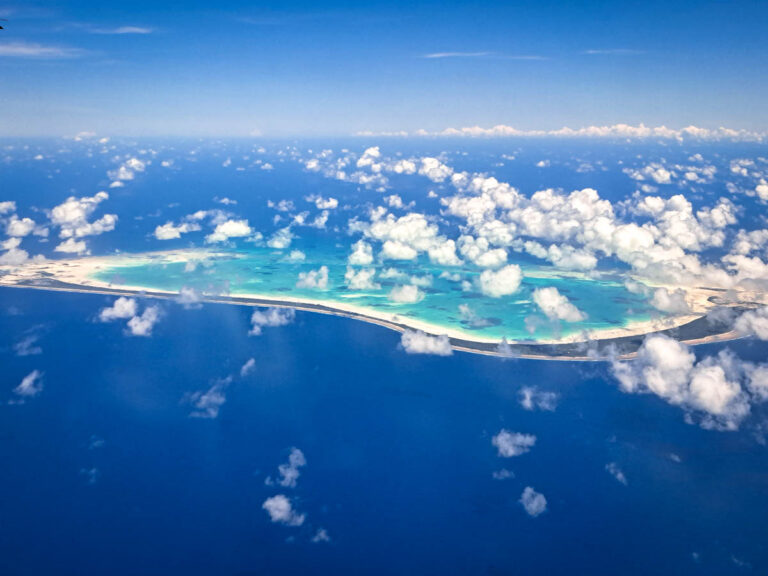
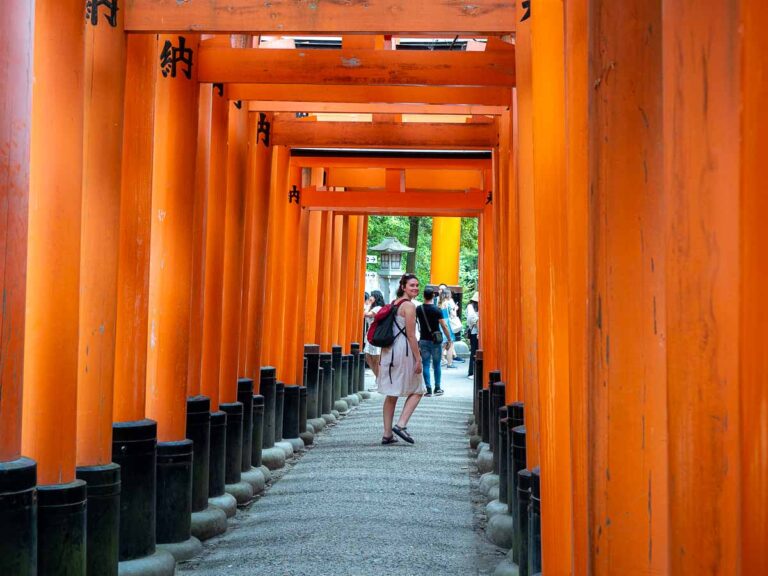
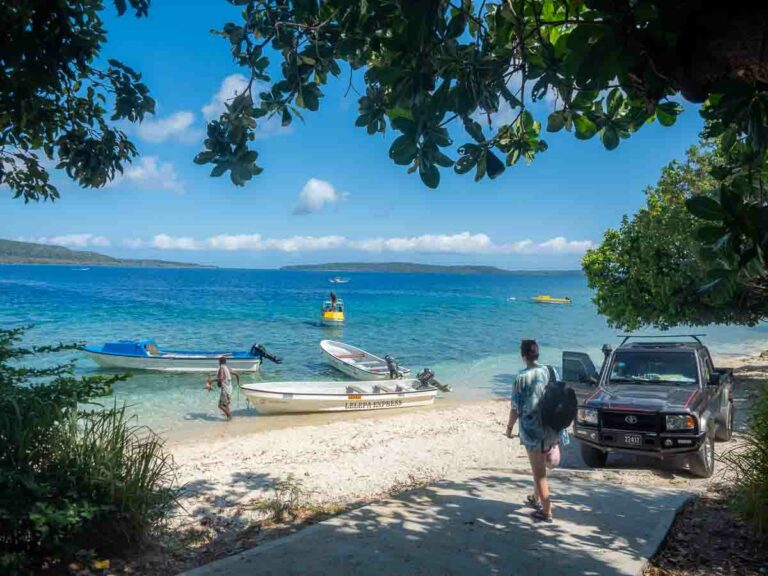
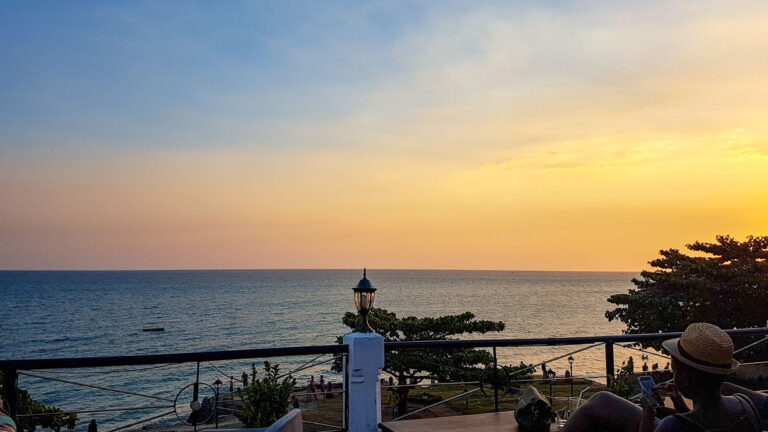
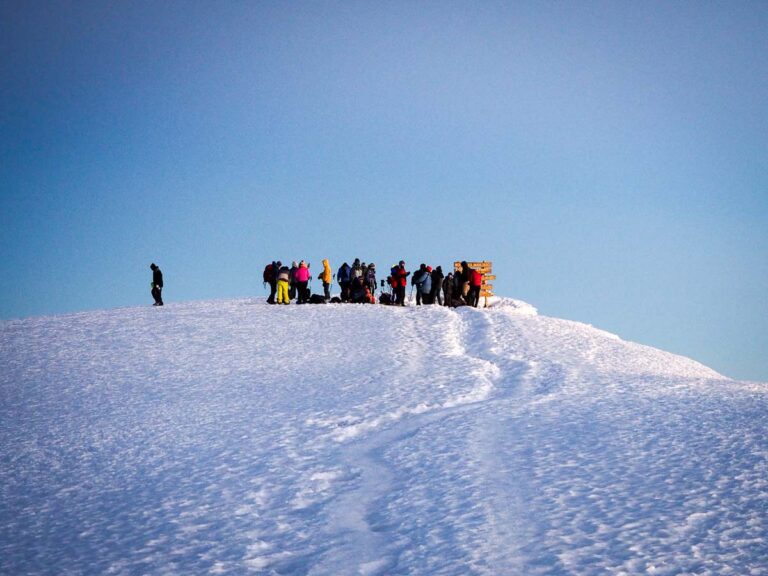

This is a fabulous resource for us. We plan to go to the Hongu area for 3 nights, maybe Yunomine Onsen, and do some highlight walks and poke around. We have not picked accommodation, but we are not going until late October. We will also look into your Skyskanner tip. Thank you very much for this detailed information. If I have some questions, can I contact you this way, through comments?
Thanks for the kind words! You’ll have a great time in Hongu. Yes, feel free to comment with any questions you have and I’ll do my best to get back to you 🙂